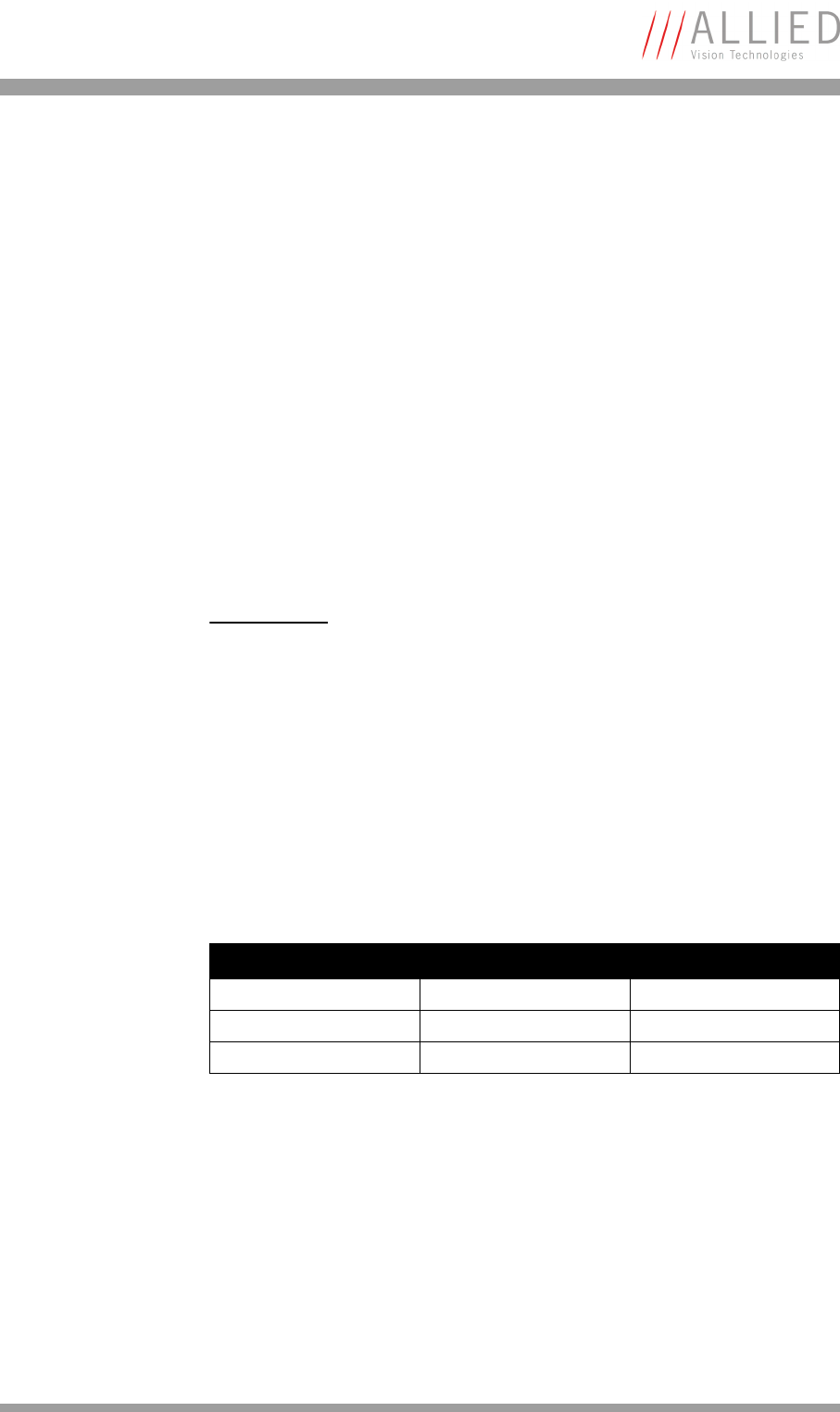
Video formats, modes and bandwidth
OSCAR Technical Manual V2.4.0
131
In addition to the Area of Interest, some other parameters have an effect on
the maximum frame rate:
• The time for reading the image from the sensor and transporting it into
the FRAME_BUFFER
• The time for transferring the image over the FireWire™ bus
• The length of the exposure time.
Read the next chapter for more details.
Frame rates
An IEEE 1394 camera requires bandwidth to transport images.
The IEEE 1394a bus has very large bandwidth of at least 32 MByte/s for trans-
ferring (isochronously) image data. Per cycle up to 4096 bytes (or around
1000 quadlets = 4 bytes @ 400 Mbit/s) can thus be transmitted.
Depending on the video format settings and the configured frame rate, the
camera requires a certain percentage of maximum available bandwidth.
Clearly the bigger the image and the higher the frame rate, there is more data
to be transmitted.
The following tables indicate the volume of data in various formats and
modes to be sent within one cycle (125 µs) at 400 Mbit/s of bandwidth.
The tables are divided into three formats:
They enable you to calculate the required bandwidth and to ascertain the
number of cameras that can be operated independently on a bus and in which
mode.
Note
L
All bandwidth data is calculated with:
1 MByte = 1024 kByte
Format Resolution Max. video format
Format_0 up to VGA 640 x 480
Format_1 up to XGA 1024 x 768
Format_2 up to UXGA 1600 x 1200
Table 51: Overview fixed formats


















